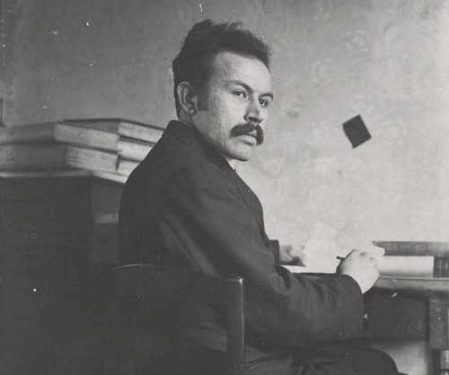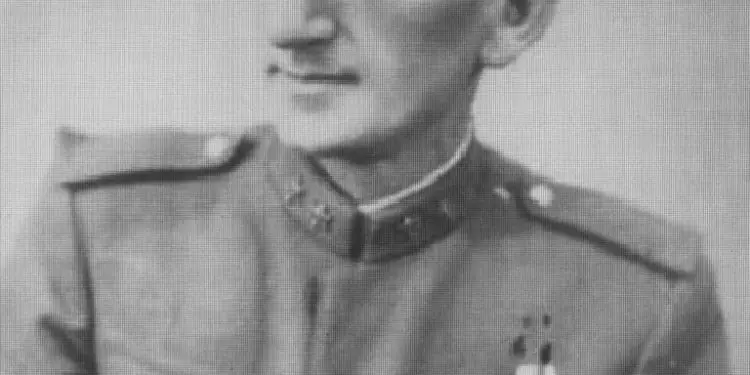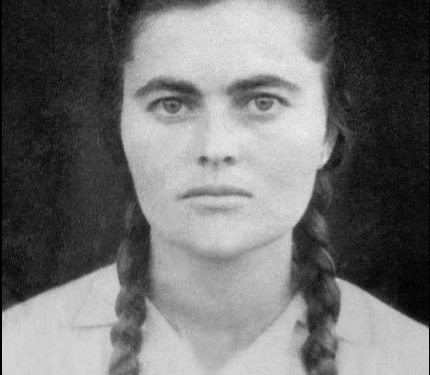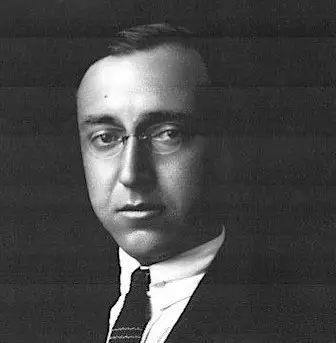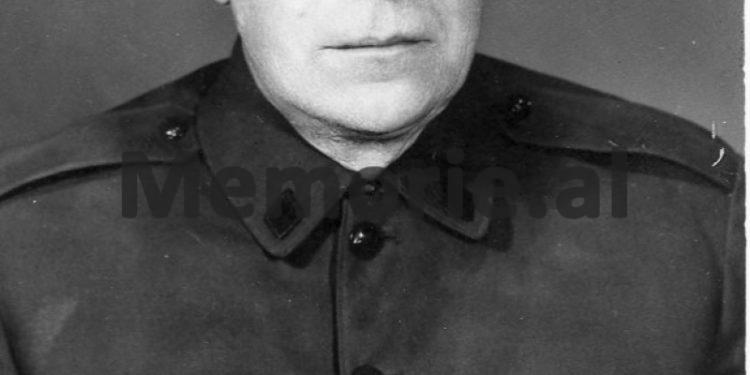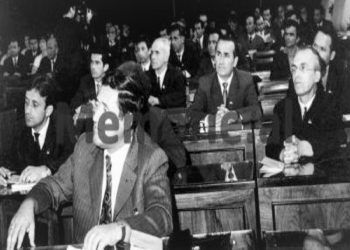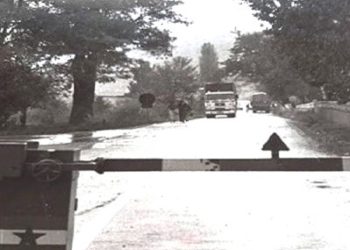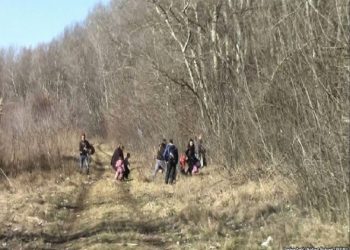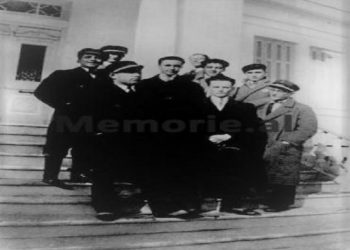From Agim Musta
Part twenty
Memorie.al / On the fourth anniversary of the passing away of the well-known historian, researcher, writer and publicist Agim Musta, (July 24, 2019), former political prisoner, his daughters Elizabeta and Suela, gave him the right to exclusivity for the publication, by the online media Memorie.al, of one of the author’s most prominent publications, such as the ‘Black Book of Albanian Communism’. This work contains numerous data, evidence, facts, statistics and arguments unknown to the general public, on communist crimes and terror in Albania, especially against intellectuals, in the period 1945-1991. The publication for the first time of parts of this book is also the realization of one of the bequests of the historian Agim Musta, who, from the beginning of 1991 until he passed away, for nearly three decades was engaged with all his powers, working to raise collective memory, through book publications and publications in the daily press. All that voluminous work of Mr. Agim Musta, concretized in several books, is a contribution of great value to the disclosure of the crimes of the communist regime of Enver Hoxha and his successor, Ramiz Alia. A good part of the publications of Mr. Agim Musta, is also translated into English. Thanking the two daughters of the late Musta, who chose Memorie.al, to commemorate their father, from today we are starting the publication, part by part, of the “Black Book of Albanian Communism”.
Continues from last issue
-Portraits of fellow sufferers-
(1945-1991)
Three Ministers of Education die in prison…!
Three Ministers of Education: Mirash Ivanaj, Xhevat Korça and Gjergj Kokoshi, died in Enverist prisons. They were the cream of the Albanian intellectual elite. They sacrificed everything to make Albania an advanced country. They were educated in the best universities in Europe. In the chair of the Minister of Education, with their titanic work, they made the Albanian school equivalent to European schools. They prepared a constellation of young intellectuals for the Albanian state. Albanian students of that time went to every university in Europe.
Dictator Hoxha put Mirash Ivanaj in prison, to take revenge for having cut off his scholarship. Birbua of Gjirokastra, instead of putting his head down on the books, visited the cabarets of France. Ivanaj left Albania on April 7, 1939, the day of the fascist invasion, and went into exile. Love for the country brought him back to Albania in 1945. He could live well in Cairo, Jerusalem and Istanbul.
The communist dictator ordered the luminary of the Albanian school to be imprisoned until he died. People like Ivanaj should die in prison and not have a grave. Even Ivan the Terrible, his “enemies”, after killing them, threw them into the Volga, so that they would not have graves. The grave is a symbol and the dictator was terrified of symbols. He ordered the tomb of the Queen Mother to be blown up. He ordered the demolition of Gjergj Fishta’s grave and threw his bones into the Buna River.
This is how he acted with Xhevat Korça, the fighter of the freedom squads, the man of pen and duplicity. He sentenced him to life imprisonment in 1945 and imprisoned him in the hellish prison of Burrel. Xhevat Korça defended his degree at the University of Vienna, with the feats of our national hero. His theme was referred to by Fan Noli, to make the major work “Historia e Skenderbeu”. After several years of suffering and torture, Xhevat Korça decided to leave that life of communist hell with dignity and announced a hunger strike. He did what many imprisoned intellectuals did not dare to do.
His name became a symbol in the oral annals of prisons. Gergj Kokoshi, former Minister of Education, like Ivanaj and Korça, closed his eyes forever in the “front yard” of Burrell. In 1946, he joined the opposition deputies of Enver Hoxha’s communist regime. He stoically endured torture and remained unbroken until the end of his life. He suffered from tuberculosis and died like a candle. After 15 years of suffering, he died and was thrown into the common pit. Will there be any country in the world where three Ministers of Education have died in prison for a period of 10 years?!
- The Agolli family, from Nishaveci i Pogradec
My friend Xhevat Agolli from Nishaveci i Pogradec told me: “My father Sulejman Agolli, fought with a gun in his hand alongside Mihal Gramenos and Gani Butka, against the Turkish invaders, Slavic chauvinists and Greek Andarts. One of his brothers was killed in these battles, while the other was captured and shot in Thessaloniki. During the fascist occupation, our house became an important base of the War against the occupiers. The Italians at the beginning of 1942 arrested me together with my father. The fascists did not spare the torture of my old man. I couldn’t stand his cries in the cells of the carabinieri, and every charge that was made against him, I took it upon myself. The military court sentenced me to five years of imprisonment and we were released when Italy capitulated.
The communist government denied the contribution of our family in the war for the liberation of the country. We were taxed with extraordinary taxes and our cattle, agricultural implements and land were taken without reward. I was sentenced to 5 years in prison and other family members were declared kulaks. When I got out of prison, I was faced with an unbearable situation. I escaped to Yugoslavia in 1951, but prison and torture awaited me there as well. I would probably have died in the cells of the UDB, if I had not escaped from prison, with the help of a Kosovar policeman, who was killed in an attempt with the Yugoslav pursuing forces.
Followed closely, I surrendered at the Albanian border post of Tushemishti, where I was immediately handcuffed and taken to the Internal Police Branch of Korça. For 22 months, all the tortures were experimented on me by the sadists Nevzat Haznedari and Nuçi Tira. They ordered the deportation of my brother to the Tepelena camp and other camps, where he suffered from the black olive, for 40 years in a row. I was sentenced for the second time to 7 years in prison and sent to the extermination camp of Maliq. In this year, my entire family of 25 people was interned in Gorishovë, Mallakastra.
In exile, they gave you only 200 gr. cornmeal per capita. From hunger and suffering in 1952, my father and a small grandson died. The Security operative and Party sectarian orders the villagers not to give my family pickaxes and shovels, for opening my father’s grave. They said that; enemies must not have graves and their corpses become food for ravens and crows. Former independence fighter Sulejman Agolli was left unburied for two days! On the night of the third day, two brave Malkastrians: Haki Begaj and Isuf Hoxha, secretly brought the tools to open the grave.
After I finished my second sentence, I was sent to exile and after two years I was arrested again. I was sentenced to 10 years in prison for agitation and propaganda. I did it grain by grain. In total, I suffered 22 years of imprisonment and 24 years of exile, while the whole family suffered 300 years of imprisonment and exile. We have been robbed of our movable and immovable property, put on by the sweat and hard work of our forefathers. We have been left without a house and a house. Our children have remained uneducated and have taken the streets of Greece to make a living.
We were lazy and they turned us into servants. The Pogradec district was hit hard by the communist dictatorship. Thousands were imprisoned and exiled; hundreds were shot and fled abroad. I’m sorry that you forgot and didn’t list it in “Mandelët e Albania”; Haki Isuf Slatina. Hakiu is the son of Murat Isufi, independence fighter in the province of Mokra, He suffered 36 years in prison and neither youth nor family was recognized. He never complained about his black fate, but always smiling and loving. Today he lives alone, old and with a collection of diseases, in the city of Pogradec”
- Fading
In 1946, forced labor was legalized in Albania. Every convict, whether “enemy” or ordinary, was forced to work as a slave of antiquity. Few are those works that do not bear the stamp of the sweat and blood of the convicted. Sewers, draining swamps, extracting minerals, building airports, etc., were built by 20th century slaves, with police whips on their heads. Only divas could achieve such high rates, which were required. There have been many cases when the prisoners drowned them in the mud of the swamps, because they did not meet the standards.
The same fate awaited those who fainted from work and passed out. Woe to those who fell! They covered them with a few shovelfuls of earth where they fell. In Maliq, in Vlashuk, in Gjadër, if they are searched, they will discover dozens of skeletons of prisoners, buried half alive and half dead. No one asked about them. Families were the last to hear about their deaths. Those who survived were so alienated that even their closest people did not recognize them. The calories expended at work were ten times the ones they got from prison leaves.
A delvinjot merchant lost half of his body weight in Vlashuk within a few months. The fat turned into marsupials, the thin into skeletons. Working to death transfigured the convicts. Young people shriveled and looked like old men. Among the elderly, those who had some help from their families survived. Hunger was constantly present. A journalist graduated from the Sorbonne in France, like a fool, he ate the vomit of a newly arrived convict in Maliq’s camp.
A pharmacist, once a symbol of beauty, endured blows from policemen’s batons for biting a muddy radish found on the ground. Five prisoners kept a dead friend in their cell for days, just to get 100 grams of corn bread. Such incidents are uncountable. Hunger was the language of death, which licked the prisoners every day. Many of them defied death and remained alive as witnesses of those cruel deeds.
- Albanian women in the prisons of the communist dictatorship
One of the stains of the Enverian dictatorship’s crimes is the execution of 450 women and the sentencing of 23,000 women to heavy prison terms and deportations, for political reasons. Several hundred of them suffered incurable psychological trauma. Among them there were brave highlanders, simple peasant and citizen women, genuine intellectuals, graduates of Western European universities, up to teenagers, who were cruelly tortured in the dark cells of the Communist Security.
With thousands of other women, they followed their sons, brothers, husbands and fathers through prisons and forced labor camps, risking their lives to keep their relatives alive, so they wouldn’t starve. Fatbardha Saraçi (Mulleti) and Maria Medicina have a special merit, that with their writings, they have highlighted the suffering and persecution of the Albanian women martyrs, from the cruel communism.
- Marie Tuci, massacred by former Deputy Prime Minister and Minister of Internal Affairs, Mehmet Shehu
Who was Marie Nikola Tuci? She was a poor peasant girl from the village of Ndrefana in Mirdita. The parents fulfilled the girl’s burning desire to become a teacher and did what they could and managed to take her to the “Stigmatine” school in Shkodër.
Maria continued this school, until its closure in 1946, because the communists could not stand a school that smelled of Europe. For the newly established schools in 1947, the need for teachers was urgent, and Maria began teaching at Nterfana. Except when the other teachers left, they transferred him to Gojana and later to Sang i Fani.
But the black August also came for Mirdita, with the murder of Bardhok Biba. Shootings without trial. Unfinished internments. Marie’s brother was also arrested, along with her sister. But the brother was given a trial, in which four sentences were death, hanging, and other sentences of death (shooting) besides other severe punishments.
Marie was kept for a few days in Mirdita prison and then killed in the auto-prison that would take the arrested to Shkodër. The policeman, Selami Kajani, tightens the bars so hard that the girl’s fingers started to become paralyzed. Meanwhile, Mehmet Shehu appeared near the auto-jail and was given a look inside.
Mehmet Shehu, cursed the victims and turned to Marie. He checked the irons and gave it an extra firm squeezes. The bones began to crack, but Maria tried not to let go. Then Mehmeti turned to policeman Selam and told him to do his job well: “This is how the hands of the enemies of the people are shaken!”
Meanwhile, Maria clenched her teeth so that her sighs would not be felt too much. In the dungeon of the Shkodra prison, Marie’s irons were removed: meanwhile her hands hung and her fingers could not move. Drita Kosturi, Marie Zorba and Ana Ndoja rubbed his hands, but all he had to do was wash them with tears. His hands had lost their life.
All three of her friends have told about their and Marie’s torture. The policeman had thrown some cold cornbread on the floor. Mary couldn’t handle it. She was very hungry and hungry. He tried to grab it with his teeth, but it was impossible. Friends tried to feed him, putting it in his mouth.
Instantly the dungeon door opened and the policeman’s scream drove the women away from each other. When the gate was closed, Maria refused to eat any more: “I’d rather die as soon as possible, than to prolong my suffering for a few more days” and Marien, who was half dead”.
It was not known how many days Maria was hanging. But it is known that on September 24, 1949, they took him out of the dungeon with some boards, like a coffin, and took him straight to the Rrmaji cemetery, and it is not known if they put him in the grave, or if they took him to a pit in the graves of common in the shingle of Cyrus.
Since this 22-year-old girl, who had taught the students to sit on books, be kind and love each other, was left without a grave, it is not known if any good person will be found to raise a stone in the village cemetery and named Marie Tuci, to show people that once there lived a fragile girl who preached love and who was massacred by cruel people, in the dungeons of Shkodra. Memorie.al
The next issue follows




